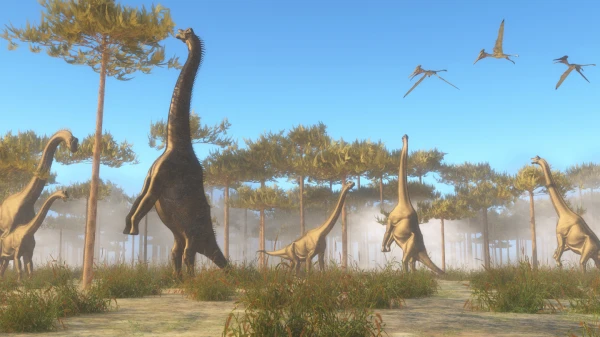
Paleontologists explain why the giants did this.
Scientists have determined that some sauropods — long-necked quadrupedal dinosaurs — could freely rise on their hind limbs. This ability provided them with an evolutionary advantage: access to high foliage and the ability to deter predators.
Specialists from Brazil, Germany, and Argentina applied engineering approaches to study fossil remains. They created 3D models of the femurs of seven sauropod species and simulated the effects of gravity and muscle forces of the enormous reptiles, writes Phys.org.
The analysis showed that young individuals of the Uberabatitan and Neuquensaurus species easily maintained a vertical position, despite reaching sizes comparable to modern elephants. Larger species could stand briefly due to excessive stress on their bones. The femurs of South American species distributed weight more effectively.
Uberabatitan is a genus of sauropod dinosaurs that lived during the Late Cretaceous period (71–66 million years ago). It reached a length of 18 meters, a height of 6 meters, and weighed 25 tons. Neuquensaurus measured 10-15 meters in length and resembled Saltasaurus, having a thick armor of bony plates and spikes across its back.
"Giant sauropods could theoretically stand, but they did so rarely and for short periods," noted paleontologists.
The ability to rise on their hind legs gave sauropods access to vegetation unreachable by others, the ability to visually intimidate predators, and developed new mating strategies and social behaviors.
Comparative analysis provides valuable information about the behavioral adaptations of these amazing creatures that inhabited the Earth 66 million years ago. The study demonstrates how modern engineering methods help uncover the secrets of ancient ecosystems.













